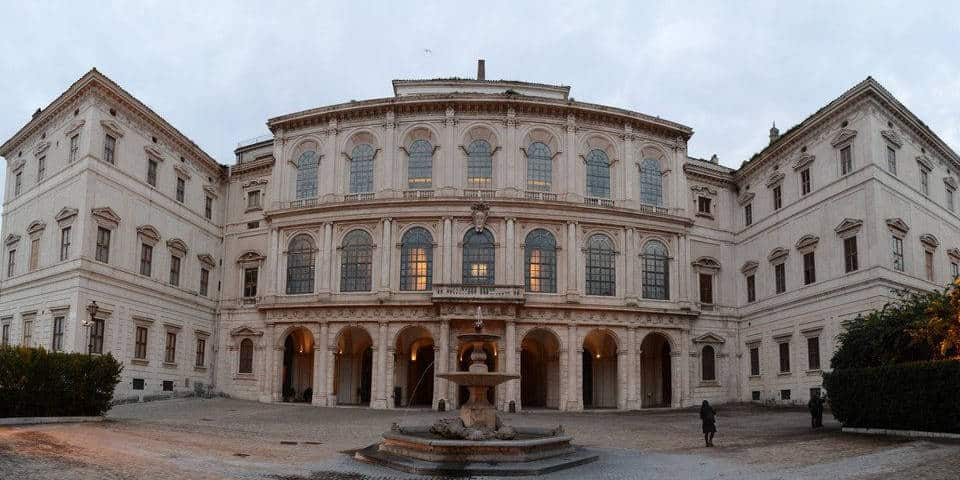

24901 views
Written by: Kate Zusmann

| Tickets |
Buy tickets online: |
|---|---|
| Tip | The ticket also is valid for 20 days to visit Galleria Corsini in Trastevere Neighborhood. |
| Opening Hours |
Sunday:
-
Tuesday:
-
Wednesday:
-
Thursday:
-
Friday:
-
Saturday:
-
|
| Recommended tour | |
| Closest bus stops | |
| Closest subway stations |
|
| Address | Via delle Quattro Fontane, 13, Roma |
| Website | www.barberinicorsini.org |
The Barberini Palace (Palazzo Barberini) is a 17th-century palace in Rome facing the Piazza Barberini. It houses the Rome’s National Gallery (Galleria Nazionale d’Arte Antica). It was built in 1549 and occupied by the Sforza family. However, when Cardinal Alessandro Sforza had financial hardships, Maffeo Barberini purchased the building in 1625.
Three famous architects worked to create the palace: Carlo Maderno, Francesco Borromini, and Gian Lorenzo Bernini, who completed the works in 1633.
In 1953, the Barberini Palace became a museum and joined Galleria Corsini at the seat of Rome’s National Gallery. The collections of both Corsini Gallery and Barberini Palace include masterpieces such as “Allegory of Divine Providence” by Pietro da Cortona, “La Fornarina” by Raphael, “Judith and Holofernes” by Caravaggio, a bust of Urbano VIII by Bernini, and works from the 17th and 18th centuries from the collections of the Barberini and Corsini families.
Contents
ToggleSee also a Guide to Borromini’s Masterpieces in Rome.
Rome’s National Gallery contains masterpieces like Murillo’s “Madonna and Child,” Filippo Lippi’s “Tarquinia Madonna” with baby Jesus, and artworks by Rubens, Van Dyck, Andrea del Sarto, Luca Giordano, Guercino, and others.
Below are the top 43 paintings that I recommend viewing at the Barberini Gallery:
Author: Kate Zusmann
This website uses cookies. For more info read the cookies policy
Rome.us © 2026. Created with love by Roman experts and guides.